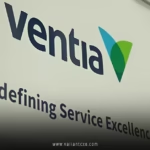Carbon Accounting 101: How SMBs Can Stay Compliant and Green isn’t just a buzzword—it’s a lifeline for small and medium-sized businesses (SMBs) navigating today’s eco-conscious landscape. Imagine your business as a ship sailing through a sea of regulations and customer expectations. Without a map, you’re bound to hit rough waters. That’s where carbon accounting comes in—a compass to guide SMBs toward sustainability and compliance without sinking the budget. This article dives deep into the what, why, and how of carbon accounting, tailored specifically for SMBs eager to make a green impact while staying on the right side of the law.
What Is Carbon Accounting, Anyway?
Let’s break it down. Carbon accounting is like tracking your business’s environmental footprint the way you’d track expenses in a ledger. It’s about measuring, managing, and reporting the greenhouse gas (GHG) emissions your business produces—think carbon dioxide, methane, and others. For SMBs, Carbon Accounting 101: How SMBs Can Stay Compliant and Green means understanding your emissions to make smarter, greener decisions.
Why does this matter? Governments worldwide are tightening regulations, and customers are demanding eco-friendly practices. Ignoring carbon accounting is like ignoring a tax audit—eventually, it’ll catch up with you. By getting a handle on your emissions, you’re not just dodging penalties; you’re building a brand that screams responsibility and care.
The Basics of Carbon Accounting
Carbon accounting involves quantifying emissions across three scopes:
- Scope 1: Direct emissions from sources you own or control, like company vehicles or on-site fuel use.
- Scope 2: Indirect emissions from purchased energy, like electricity for your office.
- Scope 3: Everything else—supply chain, employee commuting, or waste disposal.
For SMBs, Scope 1 and 2 are often the easiest to tackle, but Scope 3 can be a beast. Don’t worry, though—Carbon Accounting 101: How SMBs Can Stay Compliant and Green starts with small, manageable steps.
Why Should SMBs Care About Carbon Accounting?
You might be thinking, “I’m just a small business. Do I really need to worry about this?” The short answer: yes. Here’s why Carbon Accounting 101: How SMBs Can Stay Compliant and Green is a game-changer:
Regulatory Compliance
Governments are cracking down. In the EU, for example, the Corporate Sustainability Reporting Directive (CSRD) requires even smaller businesses to report emissions by 2026. In the U.S., states like California are pushing similar mandates. Non-compliance could mean hefty fines or lost contracts. Carbon accounting keeps you ahead of the curve, ensuring you’re ready when regulators come knocking.
Customer Expectations
Today’s customers are savvy. They want to support businesses that care about the planet. A 2023 survey found that 78% of consumers prefer brands with clear sustainability goals. By embracing Carbon Accounting 101: How SMBs Can Stay Compliant and Green, you’re not just checking boxes—you’re winning hearts and wallets.
Cost Savings
Here’s a surprise: going green can save you green. Carbon accounting often reveals energy inefficiencies or wasteful practices. For example, switching to LED lighting or optimizing delivery routes can cut costs while reducing emissions. It’s like finding money in your couch cushions—small changes add up.
How SMBs Can Get Started with Carbon Accounting
Ready to dive into Carbon Accounting 101: How SMBs Can Stay Compliant and Green? You don’t need a PhD or a big budget. Here’s a step-by-step guide to make it happen.
Step 1: Assess Your Emissions
Start by figuring out where your emissions come from. For most SMBs, this means looking at:
- Energy Use: Check electricity and gas bills to estimate Scope 2 emissions.
- Transportation: Track fuel use for company vehicles or delivery fleets (Scope 1).
- Supply Chain: Ask suppliers about their emissions to get a handle on Scope 3.
Don’t have exact numbers? No problem. Tools like the EPA’s Simplified GHG Emissions Calculator can help you estimate emissions with minimal data.
Step 2: Choose the Right Tools
You don’t need to hire a sustainability consultant (though they can help). Plenty of user-friendly tools are designed for SMBs. Platforms like Carbon Trust’s SME Carbon Footprint Tool simplify the process, letting you input data and get a clear emissions report. Many are free or low-cost, making Carbon Accounting 101: How SMBs Can Stay Compliant and Green accessible to all.
Step 3: Set Realistic Goals
Once you know your emissions, set targets to reduce them. Think of it like a fitness goal—start small and build up. Maybe aim to cut energy use by 10% in a year or switch to a renewable energy provider. The key is to make goals specific, measurable, and achievable.
Step 4: Report and Communicate
Transparency is your friend. Share your progress with customers, investors, and employees. A simple webpage or annual report showcasing your efforts in Carbon Accounting 101: How SMBs Can Stay Compliant and Green builds trust. Plus, it’s great for SEO—search engines love fresh, relevant content.
Common Challenges and How to Overcome Them
Let’s be real: Carbon Accounting 101: How SMBs Can Stay Compliant and Green isn’t always smooth sailing. Here are some hurdles SMBs face and how to clear them.
Limited Resources
SMBs often juggle tight budgets and small teams. The good news? You don’t need a dedicated sustainability officer. Use free tools, delegate tasks to existing staff, or partner with local universities for intern support. Every little bit counts.
Data Overload
Collecting emissions data can feel like drinking from a fire hose. Start with what’s readily available, like utility bills or fuel receipts. Over time, you can refine your data collection as you get more comfortable with Carbon Accounting 101: How SMBs Can Stay Compliant and Green.
Keeping Up with Regulations
Regulations change faster than fashion trends. Stay informed by subscribing to updates from reputable sources like the EPA or Carbon Trust. Joining industry groups can also help you stay in the loop without drowning in legalese.
The Benefits of Going Green
Embracing Carbon Accounting 101: How SMBs Can Stay Compliant and Green does more than check boxes. It’s like planting a seed that grows into a thriving tree. Here’s what you stand to gain:
Enhanced Brand Reputation
Customers love businesses that walk the talk. By showcasing your commitment to sustainability, you’re not just another coffee shop or retail store—you’re a leader in your community. Share your journey on social media or your website to amplify your impact.
Competitive Edge
Green credentials can set you apart in a crowded market. Whether bidding for contracts or attracting eco-conscious customers, Carbon Accounting 101: How SMBs Can Stay Compliant and Green gives you a leg up.
Future-Proofing Your Business
Sustainability isn’t a trend—it’s the future. By starting now, you’re positioning your SMB to thrive as regulations tighten and consumer priorities shift. Think of it as insurance against obsolescence.
Practical Tips for Staying Green and Compliant
Ready to make Carbon Accounting 101: How SMBs Can Stay Compliant and Green part of your business DNA? Here are some actionable tips:
- Conduct an Energy Audit: Identify where you’re wasting energy and fix it. Many utility companies offer free or low-cost audits.
- Engage Employees: Get your team on board with simple actions like turning off lights or carpooling. Make it fun with green challenges or rewards.
- Partner with Green Suppliers: Choose vendors who prioritize sustainability to reduce your Scope 3 emissions.
- Leverage Technology: Use cloud-based software to track emissions in real-time, saving you from spreadsheet headaches.
Real-World Examples of SMBs Nailing Carbon Accounting
Let’s look at some SMBs that have mastered Carbon Accounting 101: How SMBs Can Stay Compliant and Green:
- A Local Café: A small coffee shop in Seattle slashed its emissions by 15% by switching to compostable cups and sourcing beans from sustainable farms. They shared their journey on Instagram, boosting customer loyalty.
- A Boutique Retail Store: A clothing store in London used carbon accounting to identify high-emission suppliers and switched to local, eco-friendly ones. The result? A 20% emissions drop and a feature in a local sustainability magazine.
- A Tech Startup: A small software company reduced its Scope 2 emissions by moving to a renewable energy provider, saving $5,000 annually while earning green certifications.
These businesses prove that Carbon Accounting 101: How SMBs Can Stay Compliant and Green is doable, even on a small scale.
Conclusion
Carbon Accounting 101: How SMBs Can Stay Compliant and Green is more than a compliance checklist—it’s a pathway to a sustainable, profitable future. By understanding your emissions, setting achievable goals, and communicating your efforts, you’re not just dodging fines; you’re building a brand that resonates with today’s eco-conscious consumers. Start small, use the right tools, and don’t be afraid to shout about your progress. The planet—and your bottom line—will thank you. Ready to take the first step? Your green journey starts now.
FAQs
1. What is the first step in Carbon Accounting 101: How SMBs Can Stay Compliant and Green?
The first step is assessing your emissions. Look at energy bills, fuel use, and supply chain data to get a baseline. Free tools like the EPA’s GHG Calculator can simplify this process.
2. Do SMBs need to hire experts for Carbon Accounting 101: How SMBs Can Stay Compliant and Green?
Not necessarily! Many affordable tools and resources are available, like Carbon Trust’s SME Carbon Footprint Tool. Start with what you can manage in-house and scale up as needed.
3. How does Carbon Accounting 101: How SMBs Can Stay Compliant and Green save money?
By identifying inefficiencies—like excessive energy use or wasteful logistics—carbon accounting helps you cut costs. For example, optimizing delivery routes can lower fuel expenses.
4. Are there legal requirements for Carbon Accounting 101: How SMBs Can Stay Compliant and Green?
Yes, regulations like the EU’s CSRD or California’s emissions laws are increasingly applying to SMBs. Staying compliant avoids fines and keeps you competitive.
5. How can I communicate my efforts in Carbon Accounting 101: How SMBs Can Stay Compliant and Green?
Share your progress through social media, your website, or annual reports. Transparency builds trust and attracts eco-conscious customers.
Click Here:valiantcxo.com


